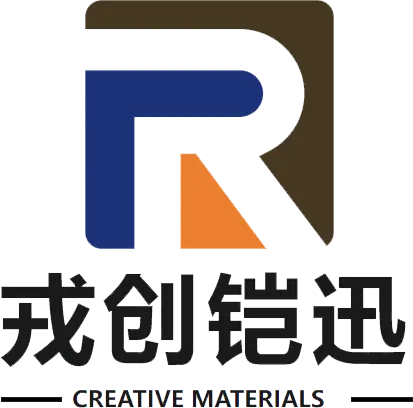 Alumina oxide, a crucial material in various industrial applications, has witnessed significant demand growth, driven by advancements in technology and increased usage in sectors such as ceramics, electronics, and automotive. According to a recent report by Market Research Future, the global alumina oxide market is projected to reach USD 32 billion by 2025, growing at a CAGR of 6.3% during the forecast period. This surge in market dynamics underscores the importance of sourcing high-quality alumina oxide to meet the evolving needs of industries. As we delve into the ultimate guide for sourcing the best alumina oxide, we will explore key factors that influence quality, supply chain considerations, and market insights that can help stakeholders make informed decisions and optimize their procurement strategies in this competitive marketplace.
Alumina oxide, a crucial material in various industrial applications, has witnessed significant demand growth, driven by advancements in technology and increased usage in sectors such as ceramics, electronics, and automotive. According to a recent report by Market Research Future, the global alumina oxide market is projected to reach USD 32 billion by 2025, growing at a CAGR of 6.3% during the forecast period. This surge in market dynamics underscores the importance of sourcing high-quality alumina oxide to meet the evolving needs of industries. As we delve into the ultimate guide for sourcing the best alumina oxide, we will explore key factors that influence quality, supply chain considerations, and market insights that can help stakeholders make informed decisions and optimize their procurement strategies in this competitive marketplace.
Alumina oxide (Al₂O₃) plays a crucial role across various industries due to its unique properties, including high thermal stability, excellent mechanical strength, and resistance to corrosion. Recent advancements in lightweight composite structures harness the superior attributes of alumina oxide, especially in high-temperature environments. As highlighted in a comprehensive review, oxide-based ceramic matrix composites, which prominently feature alumina oxide, are being revolutionized in applications ranging from aerospace to automotive manufacturing. These composites not only enhance mechanical performance but also contribute to weight reduction, which is pivotal for energy efficiency in modern engineering applications.
Moreover, the utilization of alumina nanoparticles is gaining traction in thermal management applications. Studies indicate that the incorporation of alumina-copper oxide nanoparticles into therminol heat transfer fluids significantly improves thermal conductivity, vital for ensuring system reliability in industrial processes. Additionally, recent innovations in the synthesis of low-cost alumina nanoparticles have demonstrated their effectiveness as adsorbents, further expanding their utility in environmental applications, such as electrochemical sensors designed to detect pollutants. By leveraging the fundamental properties and myriad applications of alumina oxide, industries can drive technological advancements and sustainability efforts.
When selecting reliable alumina oxide manufacturers, it's crucial to consider several key factors that can significantly impact product quality and supplier reliability. First and foremost, assess the manufacturer’s credentials and certifications. A reputable supplier should have relevant industry certifications, such as ISO 9001, which reflects their commitment to quality management practices. Investigating their production processes and quality control measures can provide insights into their operational standards.
Another essential factor is the manufacturer’s experience and expertise in the alumina oxide market. Look for suppliers who have a proven track record in producing high-quality alumina oxide products. Take the time to review case studies or testimonials from previous clients, as these can offer valuable perspectives on the manufacturer's reliability and service.
**Tips:** Always request samples before making bulk purchases. This allows you to evaluate the quality and ensure that it meets your specifications. Additionally, consider the manufacturer’s customer support and response time. A company that prioritizes communication and customer service can create a smoother procurement experience, addressing any issues promptly and effectively. Don’t hesitate to ask about their supply chain practices as well, as this can affect product availability and delivery timelines.
This chart illustrates key factors to consider when sourcing alumina oxide. Factors such as purity percentage, particle size, market price, and supplier reliability are crucial when selecting reliable manufacturers.
When sourcing alumina oxide, comparing suppliers based on quality, pricing, and delivery is crucial for making informed decisions. Several top manufacturers stand out in the market, each offering unique advantages. For instance, Company A provides high-purity alumina oxide that is ideal for the electronics industry, boasting superior quality metrics and certifications. However, this level of quality often comes with a higher price point.

On the other hand, Company B offers competitive pricing, appealing to businesses looking for cost-effective options without significantly compromising quality.
Additionally, delivery times and reliability are critical factors in supplier comparison. Company C excels in logistics, ensuring timely delivery even for large orders. Their strong distribution network allows for quick turnaround, making them a preferable choice for companies that cannot afford production delays. In contrast, while Company D may offer lower initial prices, their longer lead times make them less attractive for urgent procurement needs. Thus, balancing these factors—quality, pricing, and delivery—is essential for sourcing the best alumina oxide to meet specific operational requirements.
In recent years, the demand for alumina oxide has surged due to its critical applications across various industries, particularly in ceramics, electronics, and aerospace. According to a report by Research and Markets, the global alumina market is projected to reach USD 40.5 billion by 2027, growing at a CAGR of 6.2% from 2020. This growth is driven primarily by the expanding demand for lightweight and durable materials in automotive and defense sectors, which are utilizing alumina oxide for its exceptional strength-to-weight ratio.
Future projections indicate that Asia-Pacific will remain a prominent market for alumina oxide, owing to the booming manufacturing sector in countries like China and India. The region accounted for over 50% of the total alumina consumption in 2021, as highlighted in a study by Global Industry Analysts. Additionally, the increasing trend of sustainability and eco-friendly materials is prompting manufacturers to innovate and develop more efficient processing techniques for alumina production, which could further stimulate market growth. As industries continue to adapt to these changing dynamics, understanding the nuances of alumina oxide sourcing becomes more crucial for stakeholders looking to leverage its properties effectively.

Building long-term relationships with alumina oxide manufacturers is vital for businesses aiming to secure a stable supply chain while achieving sustainability goals. A key factor in fostering these relationships is open and transparent communication. Engaging in regular discussions about production capabilities, quality assurance processes, and sustainability practices can lay a strong foundation for mutual trust. Moreover, sharing insights on market trends and aligning on future innovations can create a collaborative atmosphere that benefits both parties.
In an increasingly complex market influenced by the push for net-zero emissions, it's essential to understand the broader materials value chain. Manufacturers are looking for partners who not only meet their immediate product needs but also prioritize environmental responsibility. By emphasizing shared sustainability objectives and collaborating on efficient, eco-friendly manufacturing processes, businesses can not only enhance their own operational models but also contribute positively to the industry's collective efforts in addressing Scope 3 emissions. Building these long-term partnerships will lead to more resilient supply chains and a competitive edge in the market.
